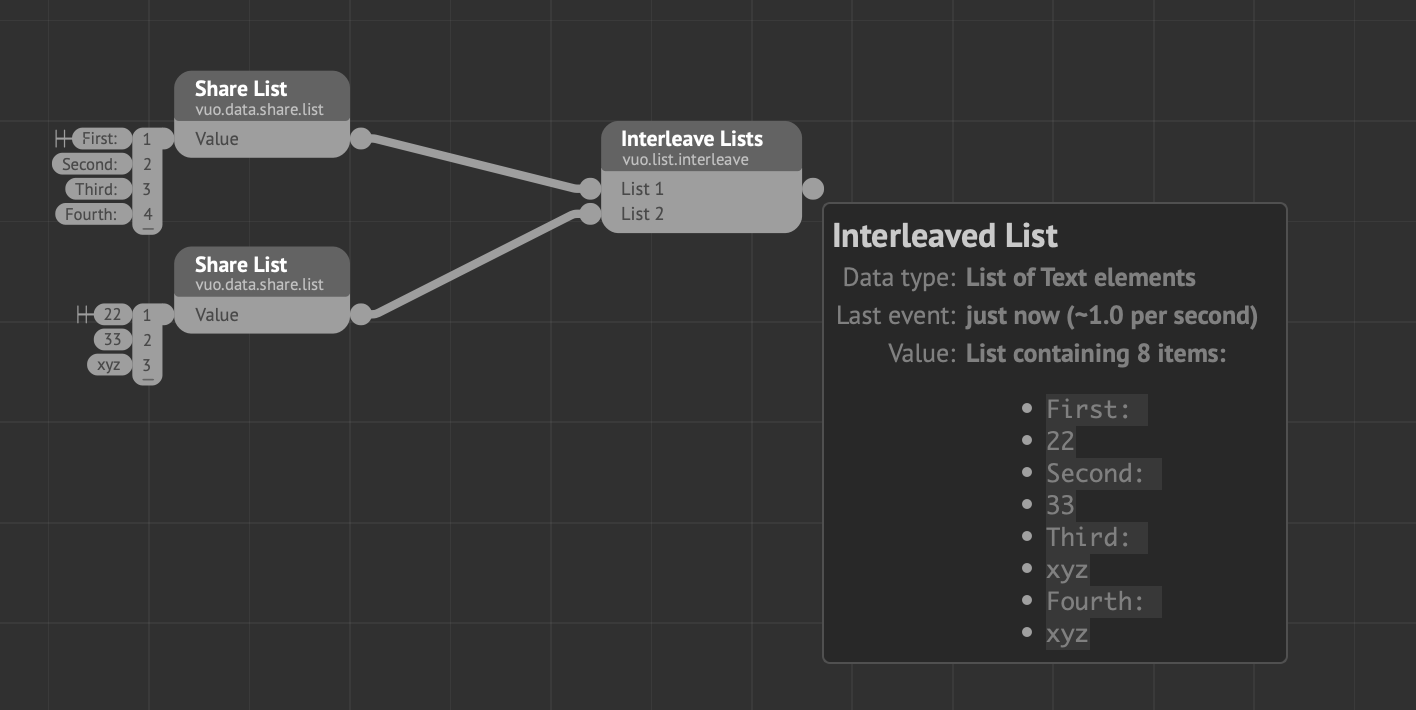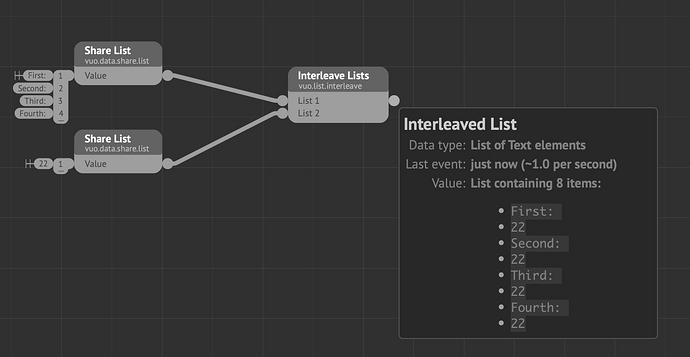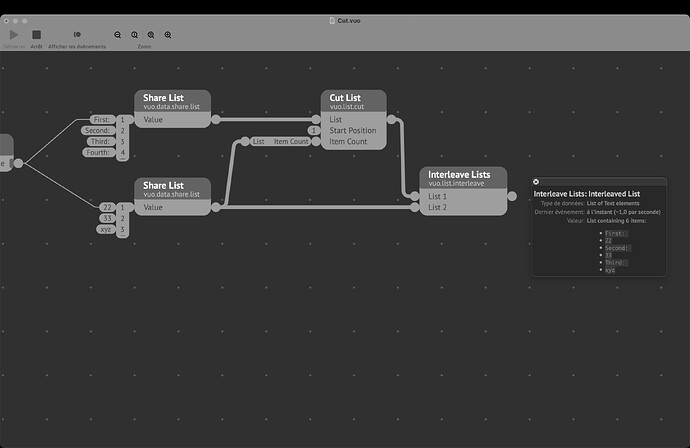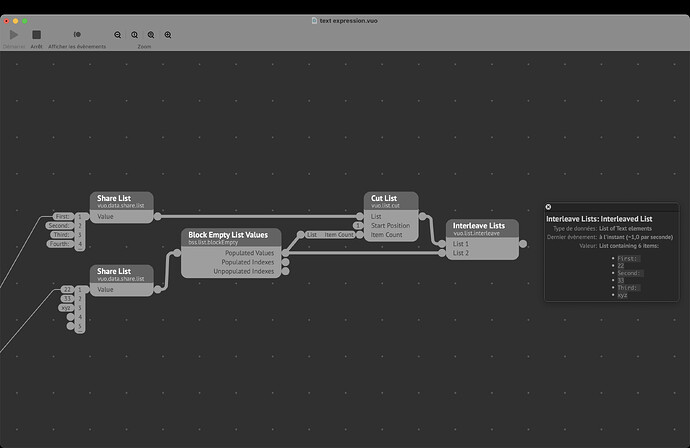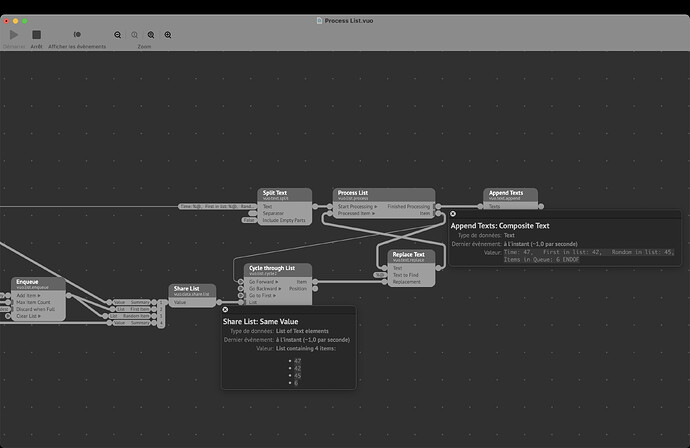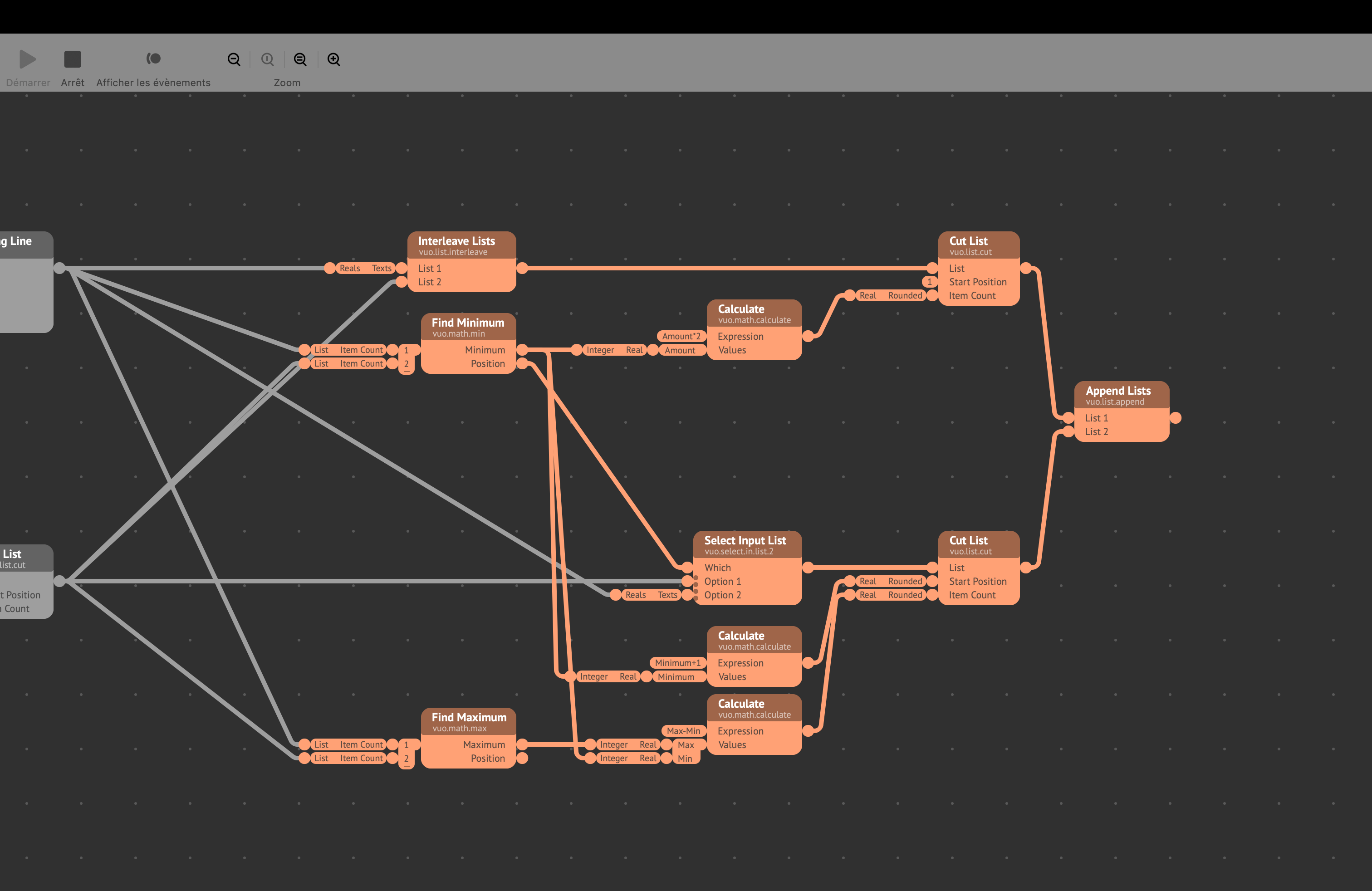Steps causing the bug to occur
- Interleave two lists of differing lengths, the second list shorter than the second list
- See that the last item in the second list is repeated to interleave with the last item(s) of the first list
- Repeat but with first list shorter than second list.
- This time the last element of the first list is repeated.
Have you found a workaround?
Complicated list counting and truncating operations to ensure that it doesn’t happen, which I can’t get to work consistently. And even then it precludes some use cases. Would be much easier for me if interleave didn’t repeat items at all.
Other notes
- Vuo version: 2.4.1
- macOS version: macOS 11
- CPU: arm64
- Have you been able to reproduce the problem? Yes, the problem occurs consistently when I follow the steps above
- How severely does this bug affect you? It prevents me from completing a specific task with Vuo.
It makes the composition of text lists o different length really problematic if you are using lists with dynamic lengths. My example is the Text Expression sub-comp I have made, it works like the QC patch that replaces every instance of a token (say “%@”) with an item from a text or number list. The use of a list to contain the values substituted into my text string is the way to do this in Vuo because Vuo cannot dynamically create input ports, one for each instance of the token string.
text expression.vuo (4.73 KB)
ud.text.flattenListOfTexts.vuo (7.95 KB)
ud.text.textExpression.vuo (4.24 KB)
